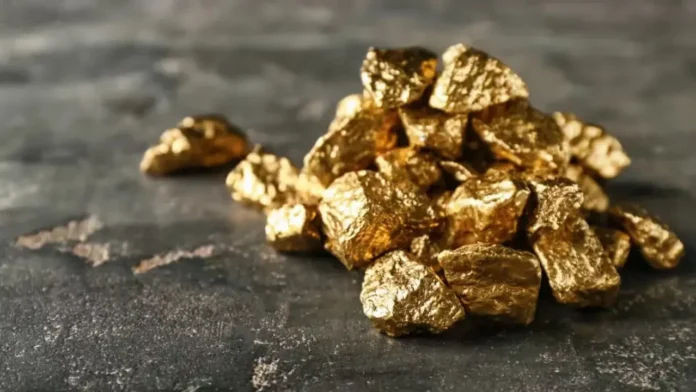The discovery of the Maria Geralda high-grade gold deposit has drawn widespread attention in the mining world. This new find, located within the Antino Gold Project, revealed impressive assay results that hint at a potentially major gold system. As exploration continues, geologists and investors are closely watching to see whether Maria Geralda becomes one of the next major gold discoveries in the Guiana Shield region.
This article explores what makes the discovery significant, the geology behind it, exploration strategies, and what the future may hold for this promising deposit.
The Discovery: A Promising Beginning
The Maria Geralda zone delivered an extraordinary intercept of 22.5 meters averaging 11.88 grams of gold per tonne (g/t Au) — a rare combination of both grade and width. In gold exploration, such results immediately capture attention because they suggest more than just a narrow vein system.
Maria Geralda is located only a few kilometers from the Lower Antino camp, in an area previously untested by drilling. The discovery stemmed from careful surface work — auger sampling, geochemical studies, and mapping — which pointed to a strong gold anomaly. Once drilling began, the impressive results confirmed what geologists had suspected: a robust gold-bearing system may extend through this zone.
Why the Results Matter
The Maria Geralda results are important for two main reasons:
- Exceptional Combination of Width and Grade: Many discoveries yield either narrow, high-grade veins or broader, lower-grade intervals. Maria Geralda stands out because it offers both — a wide section of rock carrying high gold content. This kind of mineralization can be economically viable under multiple mining scenarios.
- Strategic Location: The deposit lies along a structural corridor within the Guiana Shield, an area historically known for hosting world-class gold deposits. Structural corridors are ideal pathways for gold-bearing fluids, making them prime exploration targets. The position of Maria Geralda along this corridor suggests strong potential for further extensions along strike and at depth.
Understanding the Geology
The geology of Maria Geralda provides key clues about how the gold formed and where it might continue. The deposit sits within the Guiana Shield — a geological region shared by countries like Suriname, Guyana, and Brazil, famous for its ancient rocks and prolific gold endowment.
At Maria Geralda, mineralization occurs mainly along shear zones that mark the boundary between volcanic and sedimentary rock units. These shear zones act as conduits for hydrothermal fluids that carry gold. As the fluids move through fractures, they cool and deposit gold-bearing quartz veins.
The host rocks are heavily altered, containing minerals like sericite, chlorite, and carbonate, all of which are common indicators of gold-bearing systems. This pattern of alteration, coupled with the structural control, suggests that Maria Geralda could be part of a larger, interconnected gold system.
Exploration Techniques Behind the Discovery
The discovery of Maria Geralda did not happen by chance — it was the result of methodical exploration. The techniques used include:
- Auger Geochemical Sampling: By collecting samples from the soil and saprolite layer, geologists identified gold anomalies hidden beneath vegetation and overburden.
- Surface Mapping and Trenching: These methods helped define visible veins, alteration zones, and fault structures.
- Diamond Drilling: The ultimate test of the surface results, drilling revealed continuous gold mineralization over significant widths.
- Structural Interpretation: By understanding the orientation and geometry of the mineralized zones, the team could plan systematic step-out drilling to trace the deposit’s limits.
Future exploration programs are expected to include additional drilling, geophysical surveys, and detailed metallurgical testing to determine how easily gold can be recovered from the ore.
From Discovery to Development: What Comes Next
While Maria Geralda’s early drill results are outstanding, turning a discovery into a mineable resource involves multiple stages:
- Follow-Up Drilling: Step-out and infill drilling are needed to test the continuity of gold grades both laterally and at depth.
- Resource Estimation: Once enough data is collected, geologists can model the deposit and estimate how much gold it may contain.
- Preliminary Economic Assessment (PEA): This early study evaluates potential mining methods, processing techniques, and economic viability.
- Environmental and Social Baseline Studies: Understanding the surrounding environment and engaging with local communities are critical for future permitting.
Only after these stages can a project move toward feasibility studies and, ultimately, potential mine development.
Regional Context: The Guiana Shield Advantage
Maria Geralda is part of the Guiana Shield, one of the world’s oldest geological formations. This ancient craton is home to several operating gold mines and numerous discoveries across Suriname, Guyana, and French Guiana.
The region’s geology is remarkably consistent — a favorable blend of greenstone belts, granitic intrusions, and shear zones that provide ideal conditions for gold mineralization. With infrastructure gradually improving and exploration technologies advancing, the Guiana Shield is attracting increased attention from major mining companies.
The discovery at Maria Geralda reinforces the idea that the region remains underexplored despite its enormous geological potential.
Environmental and Community Considerations
Modern mining companies operate with strong environmental, social, and governance (ESG) standards. Any project in a tropical ecosystem like the Guiana Shield must address issues such as water quality, biodiversity, and land use.
Responsible exploration practices include:
- Limiting land disturbance during drilling and access construction.
- Implementing water management systems to prevent contamination.
- Conducting regular consultations with local and Indigenous communities.
- Establishing transparent communication channels regarding environmental monitoring and benefits.
The Maria Geralda exploration team has emphasized that sustainable practices will guide their work as they advance the project. Responsible exploration not only minimizes environmental risks but also strengthens community trust and long-term project viability.
Investment and Economic Impact
High-grade discoveries often attract attention from investors and major mining companies. The combination of wide, rich intercepts and favorable geology gives Maria Geralda strong potential to draw joint venture or partnership interest.
If subsequent drilling continues to deliver positive results, the deposit could contribute significantly to local employment, infrastructure, and economic growth. Projects like these also help build technical capacity in nearby communities by providing training and skill development opportunities.
Moreover, successful gold projects in underexplored regions tend to have a multiplier effect — encouraging further exploration by other companies and unlocking regional mineral wealth.
Key Milestones to Watch
As Maria Geralda advances, here are the most important milestones that observers and investors should follow:
- Additional Drill Results: Will follow-up holes confirm consistent high-grade mineralization?
- Strike and Depth Continuity: Does the gold extend along the same structural trend?
- Resource Definition: How large and economically recoverable might the deposit be?
- Environmental Studies: How effectively are sustainability standards being maintained?
- Corporate Partnerships: Will major mining companies express interest in joint development?
Each of these steps will play a crucial role in shaping the future of the Maria Geralda high-grade gold deposit.
Conclusion
The Maria Geralda high-grade gold discovery marks a significant step forward for the Antino Project and the Guiana Shield region. The exceptional grade and width of the initial intercepts, combined with the strong structural setting, point toward a promising future.
While early results are encouraging, exploration success depends on methodical follow-up work. Additional drilling, careful geological interpretation, and responsible environmental management will determine whether Maria Geralda evolves from a discovery into a world-class gold deposit.
In a region already known for producing major gold deposits, Maria Geralda could become one of the next defining discoveries — showcasing the ongoing potential of the Guiana Shield and reaffirming the importance of responsible, data-driven exploration in the global mining sector.


